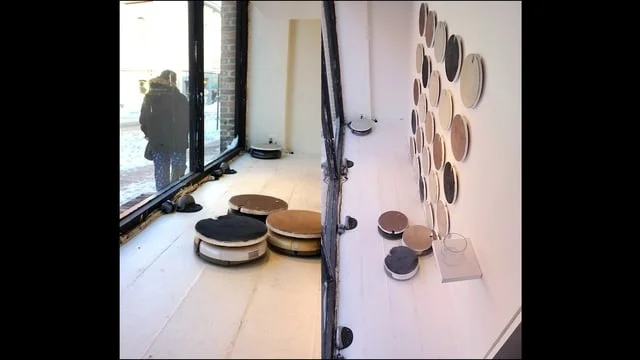



5 roombas, glass vase, fresco on thirty 13.25" round panels
Installed in the window display at SPACE Gallery in Portland, ME
Sweeping is a constant battle. It is interactions with dust, with waste, and in many aspects, sediment that is a historical trace of the domestic space. The history of sweeping and appliances made its most dramatic shifts during the 20th century. The early part of this century brought with it improvements in cleaning appliances. The success of these machines can be traced to a modern desire for cleanliness and sterility. As the 20th century advanced, these machines became faster and more efficient, thus enabling their users to invest less time cleaning and more time on other tasks. As the 21st century dawned, robotic cleaning devices became available. These autonomous domestic cleaners can be programmed to operate with no supervision. An algorithm enables them to seek and vacuum away all dirt in its path. The hand and the eye, once applied directly to all domestic tasks before the advent of electricity, is no longer necessary to complete cleaning duties. We are in a new era of hygiene. The loss of the human element in this domestic labor asks new questions that were never before possible. What does it mean for robots to clean what we do not desire to encounter ourselves? Can we ask the same questions of other autonomous objects and their tasks? Who defines the parameters of hygiene?